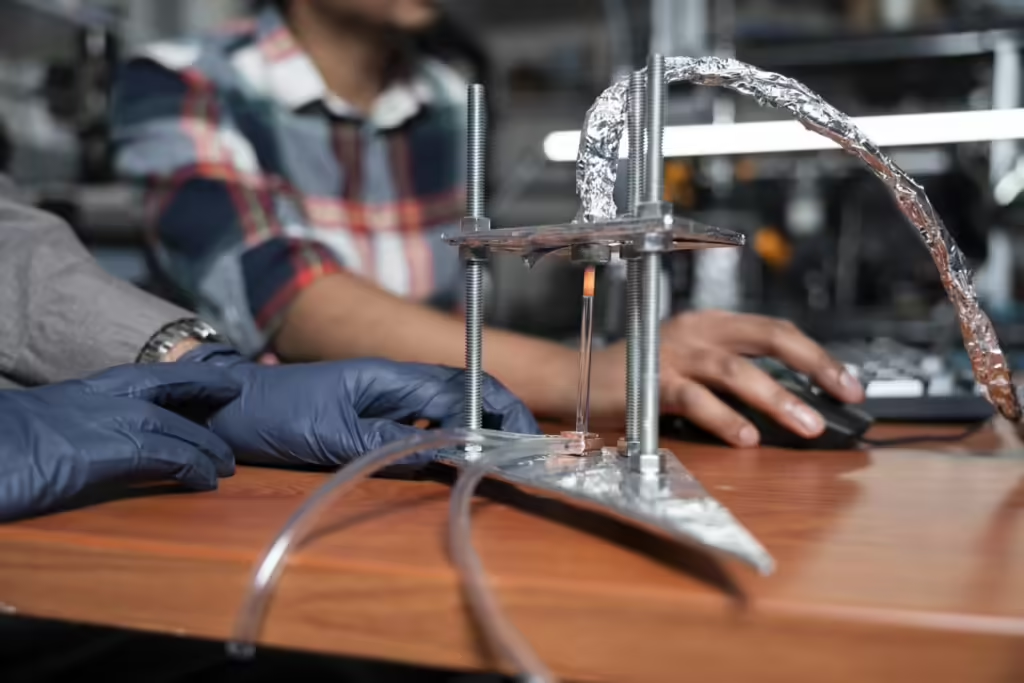
A team of engineers and material scientists from the Paul M Rady Department of Mechanical Engineering at the University of Colorado Boulder has developed a new technology to turn thermal radiation into electricity in a way that they say teases the basic law of thermal physics.
The breakthrough was discovered by the Cui Research Group, led by assistant professor Longji Cui, in collaboration with researchers from the National Renewable Energy Laboratory (NREL) and the University of Wisconsin-Madison.
According to the group, their research has the potential to revolutionise manufacturing industries by increasing power generation without the need for high-temperature heat sources or expensive materials. It can be used to store clean energy, lower carbon emissions and harvest heat from geothermal, nuclear and solar radiation plants across the globe.
‘Heat is a renewable energy source that is often overlooked,’ Cui said. ‘Two-thirds of all energy that we use is turned into heat. We can recover some of this wasted thermal energy and use it to make clean electricity.’
High-temperature industrial processes and renewable-energy-harvesting techniques often utilise a thermal-energy conversion method called thermophotovoltaics (TPV), which harnesses thermal energy from high-temperature heat sources to generate electricity. But existing TPV devices have one constraint: Planck’s thermal radiation law.
‘Planck’s law, one of most fundamental laws in thermal physics, puts a limit on the available thermal energy that can be harnessed from a high-temperature source at any given temperature,’ said Cui. ‘Researchers have tried to work closer or overcome this limit using many ideas, but current methods are overly complicated [when it comes to manufacturing] the device, costly and unscalable.’
By designing a unique and compact TPV device that can fit in a human hand, the team was able to overcome the vacuum limit defined by Planck’s law and double the yielded power density previously achieved by conventional TPV designs.

‘When we were exploring this technology, we had theoretically predicted a high level of enhancement. But we weren’t sure what it would look like in a real-world experiment,’ said Mohammad Habibi, a PhD student in Cui’s lab. ‘After performing the experiment and processing the data, we saw the enhancement ourselves and knew it was something great.’
The research emerged, in part, from the group’s desire to challenge the limits. But in order to succeed, they had to modify existing TPV designs and take a different approach.
‘There are two major performance metrics when it comes to TPV devices: efficiency and power density,’ said Cui. ‘Most people have focused on efficiency. However, our goal was to increase power.’
To do so, the team integrated what’s called a ‘zero-vacuum gap’ solution into the design of its TPV device. Unlike other TPV models that feature a vacuum or gas-filled gap between the thermal source and the solar cell, their design features an insulated, high-index and infrared-transparent spacer made out of just glass.
This creates a high-power-density channel that allows thermal waves to travel through the device without losing strength, drastically improving power generation. The material is also very cheap, one of the device’s central calling cards.
‘Previously, when people wanted to enhance the power density, they would have to increase temperature – let’s say an increase from 1,500°C to 2,000°C, sometimes even higher – which eventually becomes intolerable and unsafe for the whole energy system,’ Cui explained. ‘Now we can work at lower temperatures that are compatible with most industrial processes, all while still generating similar electrical power as before. Our device operates at 1,000°C and yields power equivalent to 1,400°C in existing gap-integrated TPV devices.’
According to the group, their glass design is just the tip of the iceberg. Other materials could help the device produce even more power.
‘This is the first demonstration of this new TPV concept,’ explained Habibi. ‘But if we used another cheap material with the same properties, such as amorphous silicon, there is a potential for an even higher – nearly 20 times more – increase in power density. That’s what we are looking to explore next.’
Cui says their novel TPV devices would make its largest impact by enabling portable power generators and decarbonising heavy-emissions industries. Once optimised, they have the power to transform high-temperature industrial processes, such as the production of glass, steel and cement, with cheaper and cleaner electricity.
‘Our device uses commercial technology that already exists. It can scale up naturally to be implemented in these industries,’ said Cui. ‘We can recover wasted heat and can provide the energy storage they need with this device at a low working temperature. We have a patent pending based on this technology and it is very exciting to push this renewable innovation forward within the field of power generation and heat recovery.’
The research has been published in Energy & Environmental Sciences.


